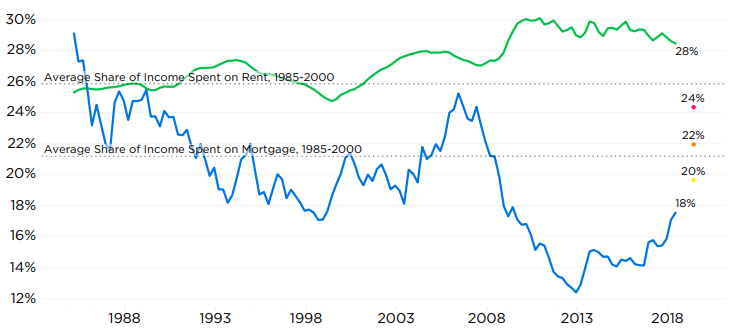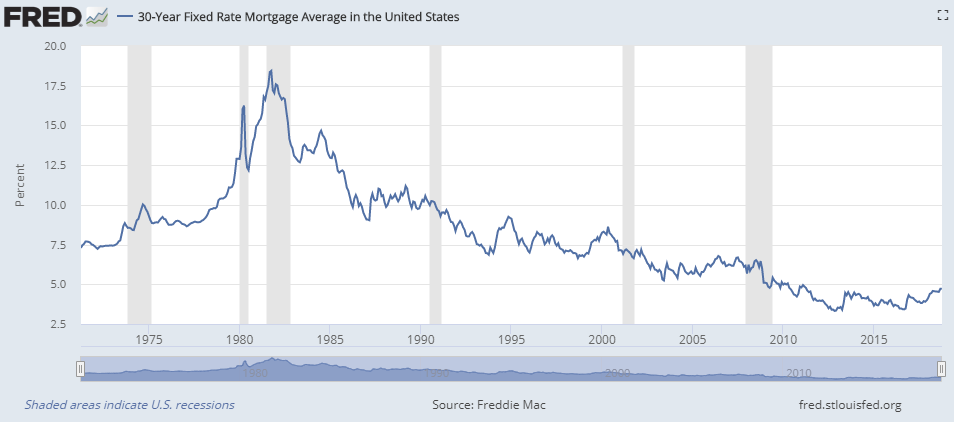A version of this piece originally appeared on Scotsman Guide on September 25, 2018 and was written by USMI Chairman Bradley Shuster.
Government-backed conventional mortgages totaled approximately $5.3 trillion as of summer 2018. As every follower of the mortgage finance system knows, the guarantors of this multi-trillion-dollar mortgage credit risk—Fannie Mae and Freddie Mac (the GSEs)—have remained under government control since being placed into conservatorship in 2008.
While GSE reform is contemplated by Congress each year, holistic legislative reform remains elusive. It’s time for our federal elected officials to put the GSEs on a more sustainable path so U.S. taxpayers don’t continue to bear the burden of undue mortgage credit risk.
There is encouraging news, however: some areas of reform have received consistent bipartisan support. The use of private capital to transfer credit risk away from taxpayers is widely supported by housing experts, members of Congress from both sides of the aisle, and the White House. There are a number of ways to do this, and over the past several years, the GSEs have been exploring new programs including transferring second-loss risk (so-called “mezzanine risk”) through credit risk transfer (CRT) transactions.
For over 60 years, private mortgage insurance (MI) has served as a significant means for transferring mortgage credit risk away from the federal government and taxpayers. This is for good reason: private MI is one of the only forms of loan-level credit enhancement positioned in a first-loss position to lenders and the GSEs—transferring the risk before it ever reaches the GSEs’ balance sheets. Private MI has helped nearly 30 million families become homeowners, including many first-time homebuyers and low- to moderate-income borrowers, by allowing them to receive prudently underwritten mortgages with as little as three percent down. In fact, private MI helped more than one million borrowers purchase or refinance a mortgage in 2017 alone and 56 percent of purchase loans went to first-time homebuyers. Further, private MI not only helps put families in homes but also keeps them there by being responsive to troubled borrowers and working with homeowners to avoid default with prudent modifications.
Since the financial crisis, the MI industry has taken important steps to strengthen and enhance its risk protection capabilities, particularly with the new Private Mortgage Insurer Eligibility Requirements (PMIERs) enacted in 2015, which nearly doubled the industry’s pre-crisis capital requirements. The industry has also improved its claims processes through updated Master Policy Agreements, which provide lenders with greater clarity about when and how the industry pays claims. Today, more than $930 billion in GSE mortgages have private MI coverage and the industry has covered more than $50 billion in claims since the GSEs entered conservatorship.
When a mortgage insurer pays a claim, it’s a claim that neither the lender nor taxpayers (for the GSEs) have to shoulder. It’s not just claims though; the MI industry is a leader in mortgage underwriting. As a loan level product, private MI brings to the table a second set of eyes in the underwriting process, which helps to approve low down payment borrowers for home financing while ensuring these borrowers meet today’s prudent lending requirements. This is where private MI has unique advantages over other forms of credit enhancement, and why it’s essential private MI remains a fundamental component of the way the GSEs transfer credit risk in any reformed system.
The GSEs and the Federal Housing Finance Agency (FHFA), as conservator and regulator, are experimenting with other CRT mechanisms as Congress considers reform. These different CRT mechanisms are similar to how mortgage insurers manage and distribute their own credit risk exposures. Importantly, unlike some other forms of opportunistic capital, private MI is consistently available across market cycles, ensuring borrowers will continue to have access to affordable mortgage credit even during bad economies and that taxpayers will consistently have meaningful protection against mortgage credit risk. Importantly, mortgage insurers do not just buy and hold mortgage credit risk. Over the years, the MI industry has demonstrated increasing sophistication in evaluating and managing this long-tail mortgage credit risk. For decades, the MI industry has actively participated in reinsurance transactions in the normal course of business to disperse risk to enhance its capital allocation and manage its own risk exposure.
More recently, the industry has also participated in various capital markets transactions. In April 2017, National MI (NASDAQ: NMIH) successfully completed its first securitization of MI risk with the issuance of more than $200 million of insurance-linked notes and this July announced the pricing of $264.5 million of 10-year mortgage linked notes. These securitizations not only help disperse mortgage credit risk, but also free up capital that can be used to help more borrowers purchase homes. Other MI companies are participating in similar securitizations and these transactions have established the MI industry as a nimble and innovative player in the housing and mortgage sector. Since 2013, U.S. Mortgage Insurers (USMI) members have transferred to the global capital and reinsurance markets $34 billion of risk, covering $160 billion of primary risk written.
What happens during a stressed market cycle is important to consider. The reality is much of what the GSEs have been experimenting with are forms of CRT that are not tied to housing and therefore will be unavailable for this type of mortgage credit risk when the housing sector is under stress. That’s one of the reasons why private MI remains an essential form of risk transfer for the GSEs. If the GSEs were to rely on their own balance sheets or an MI alternative that suddenly became unavailable, the government and taxpayers would be unduly exposed to risk.
And the MI industry is poised and capable of doing even more in any reformed housing system. While it is prudent for the GSEs to transfer second-loss risk into the capital markets, the MI industry remains active in underwriting and managing new credit risk—thereby reducing risk in the overall mortgage finance system—and remains committed to providing credit enhancement that protects taxpayers while ensuring borrowers have access to low down payment lending.
The MI industry and its products are among the most sophisticated and experienced in the housing finance system when it comes to risk management. The MI industry has proven to be unparalleled in its innovation and leadership in promoting homeownership for the last six decades and has much more to offer American homeowners. Lawmakers and policymakers have important work ahead of them to reform the GSEs, and the MI industry stands at the ready to ensure its invaluable services are part of any new system.
Bradley Shuster is the Chairman of the Board and CEO of National MI, and serves as current Chairman of U.S. Mortgage Insurers (USMI).












